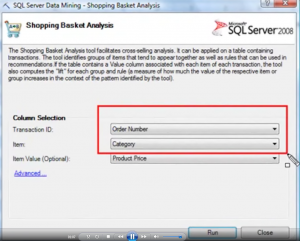Data mining has been around for years, but has yet to really take hold in the mid-market. Instead it has been the domain of extremely high-priced consultants and software tool kits leveraging advanced mathematics and special-sauce algorithms concocted by PHD’s for use by PHD’s. Microsoft has brought this functionality to the common man, and RSM is working on bringing this capability the last mile, and delivering a solution as opposed to a tool.

If I were an artist, I’d sketch a cartoon of David lining up to fight Goliath, yet instead of a slingshot, I’d arm him with Excel. This metaphor highlights one of the key benefits of Dynamics AX – that being the systemic synergy created by leveraging multiple components of the Microsoft stack. One that has me very excited is the marriage of Dynamics AX, SQL Server Analysis Services, and the Excel Data Mining Add-Ins.
What is Data Mining?
There is still a great deal of confusion as to what Data Mining really means. Most still consider it a component of ad hoc querying of data sets, or OLAP-type data interaction. In actuality, most experts consider data mining to be the description of machine-based discovery of patterns, trends or clusters within large sets of data. Predictive Analytics is a more apt description of what Data Mining is, although it is still somewhat incomplete. Microsoft offers a free add-in to Excel that brings you this capability. From the Microsoft website:
“Microsoft SQL Server 2008 delivers a comprehensive, intuitive and collaborative business ecosystem that empowers users to infuse actionable, innovative, and reliable insight seamlessly into business decisions throughout the organization.”
The challenge to this point has been the ability to marry the appropriate technology set to the business problem, without requiring very deep expertise in the underlying tools and mathematics. This is the gap we at Junction are closing.
Solving Dynamic Customer Segmentation
One example of a problem we can now solve is that of dynamic customer segmentation. For years, direct marketers relied on tools such as RFM scoring (Recency, Frequency, Monetary) in an attempt to group customers into similar buckets and predict behavior and tailor marketing plans accordingly. Data mining considers this a “clustering” problem, but allows for a much more sophisticated means of identifying which variables are statistically significant when it comes to predictive analytics. Couple this technology with Excel solver-based optimization and you can create an optimized catalog or promotion distribution level and target based on behavior and not intuition.
Generate Intelligent Up-Selling Rules
 Another exciting opportunity offered by leveraging this toolset is the ability to generate intelligent up-sell/cross-sell rules. Junction customers have long had the ability to build rules and scripting into the order capture dialog using the delivered up-sell/cross-sell engine. The challenge was in determining what rules to create, and relied mostly on the intuition of a seasoned merchant. However, by leveraging the Shopping Basket Analysis tool, these rules can be suggested by Excel analyzing trends based on data directly from the SALESLINE table.
Another exciting opportunity offered by leveraging this toolset is the ability to generate intelligent up-sell/cross-sell rules. Junction customers have long had the ability to build rules and scripting into the order capture dialog using the delivered up-sell/cross-sell engine. The challenge was in determining what rules to create, and relied mostly on the intuition of a seasoned merchant. However, by leveraging the Shopping Basket Analysis tool, these rules can be suggested by Excel analyzing trends based on data directly from the SALESLINE table.


These are just a few examples of the benefits available to users by leveraging the synergy provided by the Microsoft environment. RSM is continuing to explore these opportunities and close any final gaps by pre-configuring these utilities around the common business challenges faced by our customers. We’ll be hosting a live demonstration of the capability in the next few months, but if you are interested in discussing this sooner, please feel free to contact me directly at gcasey@dynamicserppros.com.

 RSMUS.com
RSMUS.com